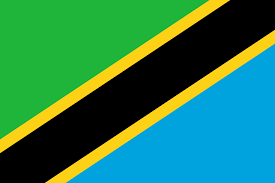This project is made possible through the partnership of WATER CHARITY and the NATIONAL PEACE CORPS ASSOCIATION. ![]()
Location
This project summary has been redacted for security reasons to omit the specific project location.
Njombe Region, Tanzania
Community Description
The local primary school is the only such school serving the primary village and 3 sub-villages. None of the villages are served by piped water or wells.
Problem Addressed
The school, with an enrollment of about 600, requires students to fetch approximately two hundred 10L buckets of water per day, to be used for the preparation of lunch, drinking, and sanitation. Currently, the burden of fetching water falls heavily on female students.
The closest water source is approximately ½ mile with an elevation change of 40 feet. Though the round-trip takes less than an hour, each student must carry a 10L bucket on their head, unaccompanied by any adults. Consequently, students miss a significant amount of time from the classroom. Female students face the risk of sexual assault or harassment.
Project Description
This project is to create a rainwater catchment system at the primary school.
Four 5,000L plastic water storage containers will be placed on raised block cement platforms, which will allow for the installation of locked taps.
Currently, the school functions on about 2,000 liters of water a day, and 20,000 liters will be sufficient as the Njombe area gets sufficient rain from the months of November until early May. By utilizing the school’s newly built classroom roof structures, the rooftops will serve as catchment areas for the rain. Gutters will be installed on the roofs to harvest the rainwater, which will then flow through a pipe system directly into the tanks.
The project will be under the supervision of counterparts and a water committee, selected by the village government. All members of the water committee have received training.
The local government will be actively involved in the monitoring and evaluation to ensure its sustainability. The project will be owned by the primary school, under the supervision of counterpart and teacher.
The community will contribute 30% of the cost, mostly in the form of manual labor. In addition, the community will be responsible for the payment of one of the 3 builders.
Project Impact
The direct beneficiaries of the project are the 565 students (291 girls and 274 boys) at the primary school. The other beneficiaries include the parents of the students and the rest of the community, who can access the water supply during the rainy season when there is a surplus.
 Project Administration
Project Administration
Peace Corps Volunteer Tsaone Tlale
Monitoring and Maintenance
The responsibility for the sustainability of the project will fall on the school and the community. The existing school committee, which already takes care of any issues at the school, together with members of the water committee, will be responsible for identifying any initial problems that may arise.
If the school is unable to handle any difficult issues, be it shortage of money or labor, the next step will be meeting with the village office, and subsequently with the community to raise funds and/or labor.
Furthermore, 10 students (boys and girls) from grade 7 will be chosen and trained by a local builder on how to identify smaller issues and to whom to report. These students will further train 10 grade, 6 students, upon their graduation. They will also be responsible for daily checks on the harvesting system, as they are in school every day.
Comments
Adequate water supply and a more nutritious lunch will increase the attendance of children in the class, which will, in turn, improve the quality of education they receive. There will be a significant reduction in absenteeism and water-related illnesses that are caused by the consumption of unsafe drinking water. Implementation of the water project will lead to better sanitation and improved education while covering a gender equity objective, and an environmental conservation aspect.
Project Funding
This project has been funded through the generosity of an anonymous donor.